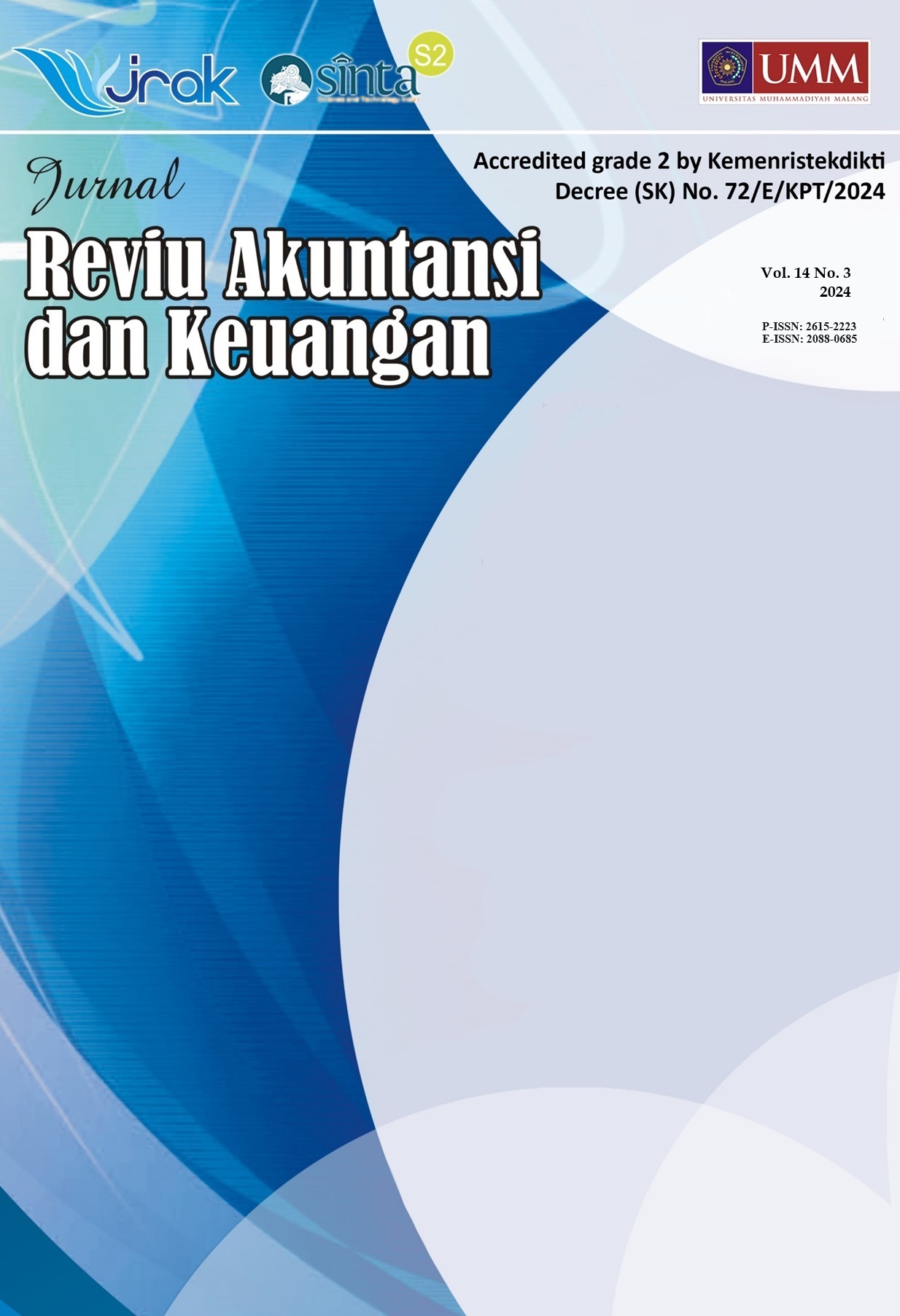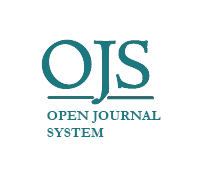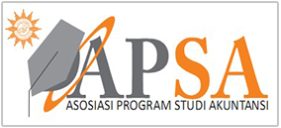Social Media Usage and Stock Return: The Mediating Role of Profitability
DOI:
https://doi.org/10.22219/jrak.v14i3.36339Keywords:
Profitability, Social Media, Stock ReturnAbstract
Purpose: This study aims to determine the effect of social media usage on stock returns and the role of profitability as a mediating variable.
Methodology/approach: This study uses a quantitative approach. The population in this study were consumer non-cyclical sector companies listed on the Indonesia Stock Exchange in 2020-2023. The sampling technique used was purposive sampling and 31 companies were obtained with an observation period of 4 years, resulting in 124 sample units in this study.
Findings: The results showed that the social media usage had a positive effect on stock returns, but profitability was unable to mediate the positive effect of social media usage on stock returns.
Practical implications: The results of this study can provide strategic insights to consumer non-cyclical companies regarding the maximization of social media usage by companies. This aims to see the dynamics of social media which will ultimately affect the company's stock returns.
Originality/value: Research related to impression management on social media and stock returns has not been widely conducted. Research with similar themes was conducted in the previous decade so it can be indicated that it is less relevant to current conditions. The research is a development of previous research that separately tested the use of social media on profitability and profitability on stock returns. Therefore, this study uses a mediating variable of profitability with a proxy for return on assets. This study also adds one category of impression management, namely financial achievement
Keywords: Social Media; Stock Return; Profitability
Downloads
References
Ahmad, S. Z., Rahim, A., Bakar, A., & Ahmad, N. (2018). Social media adoption and its impact on firm performance : the case of the UAE. International Journal of Enterpreneurial Behavior & Research, 25(1), 84–111. https://doi.org/10.1108/IJEBR-08-2017-0299
Apenteng, B. A., Ekpo, I. B., Mutiso, F. M., Emmanuel, A., & Opoku, S. T. (2020). Examining the relationship between social media engagement and hospital revenue. Health Marketing Quarterly, 37(1), 10–21. https://doi.org/10.1080/07359683.2020.1713575
Banerjee, M., Capozzoli, M., Mcsweeney, L., & Sinha, D. (1999). Beyond Kappa: A Review of Interrater Agreement Measures. The Canadian Journal of Statistics, 27(1), 3–23. https://doi.org/10.2307/3315487
Bartov, E., Faurel, L., & Mohanram, P. (2017). Can Twitter Help Predict Firm-Level Earnings and Stock Returns? In The Accounting Review (No. 2631421). https://dx.doi.org/10.2139/ssrn.2782236
Binekasri, R. (2023). Umumkan Stock Split Rasio 1:10, Saham Sekar Laut (SKLT) ARA. CNBC Indonesia. https://www.cnbcindonesia.com/market/20231002111916-17-477002/umumkan-stock-split-rasio-110-saham-sekar-laut--sklt--ara
Blankespoor, E., Miller, G., & White, H. D. (2013). The Role of Dissemination in Market Liquidity: Evidence From Firms’ Use of Twitter. Association, American Accounting, 89(1), 79–122.
Bolino, M. C., Kacmar, K. M., Turnley, W. H., & Gilstrap, J. B. (2008). A Multi-Level Review of Impression Management Motives and Behaviors. Journal of Management, 34(6), 1080–1109. https://doi.org/10.1177/0149206308324325
Bolino, M. C., & Turnley, W. H. (1999). Measuring Impression Management in Organizations: A Scale Development Based on the Jones and Pittman Taxonomy. Organizational Research Method, 2(2), 187–206.
Budiarjo, R. (2016). Good Corporate Governance Terhadap Return Saham dengan Profitabilitas Sebagai Variabel Intervening dan Moderating. Jurnal Online Insan Akuntan, 1(1), 163–194.
Burhan, F. (2020). Pengguna Whatsapp dan Instagram Melonjak 40% Selama Pandemi Corona. Katadata.Co.Id. https://katadata.co.id/febrinaiskana/digital/5e9a41f84eb85/penggunaan-whatsapp-dan-instagram-melonjak-40-selama-pandemi-corona
Chahine, S., & Malhotra, N. K. (2018). Impact of social media strategies on stock price : the case of Twitter. European Journal of Marketing, 52(8), 1526–1549. https://doi.org/10.1108/EJM-10-2017-0718
Chamberlain, D., Rudolph, H., & Smith, L. M. (2019). Analysis of Social Media Usage and Relationship to Firm Size and Revenue Growth among Major CPA Firms. Services Marketing Quarterly, 39(4), 345–357. https://doi.org/10.1080/15332969.2018.1514798
CNN Indonesia. (2020). Kronologi Serikat Buruh “Geruduk” Manajemen Es Krim Aice. https://www.cnnindonesia.com/ekonomi/20200229162547-92-479349/kronologi-serikat-buruh-geruduk-manajemen-es-krim-aice
Dewi, N. P., & Supriyanto, A. (2017). Dampak Media Sosial Terhadap Kinerja Bisnis Melalui Pemasaran Berbasis Output dan Biaya. Riset Manajemen Dan Akuntansi, 8(2), 1–11.
Dunne, N. J., Brennan, N. M., & Kirwan, C. E. (2020). Accounting , Organizations and Society Impression management and Big Four auditors : Scrutiny at a public inquiry. Accounting, Organizations and Society, 88(1), 1–42. https://doi.org/10.1016/j.aos.2020.101170
Elvira, V. (2022). Agresif Lakukan Pengembangan Produk, Begini Strategi Mustika Ratu (MRAT) pada 2022. Kontan.Co.Id. https://industri.kontan.co.id/news/agresif-lakukan-pengembangan-produk-begini-strategi-mustika-ratu-mrat-pada-2022#google_vignette
Erianto, B. (2023). Instagram Endorsement and Stock Return. Journal of Accounting and Business Education, 8(1), 1–14.
Fernando, A. (2021). Diguncang Kabar Ardi Bakrie-Nia, 4 Saham Grup Bakrie Nyungsep. CNBC Indonesia. https://www.cnbcindonesia.com/market/20210712110039-17-260032/diguncang-kabar-ardi-bakrie-nia-4-saham-grup-bakrie-nyungsep
Fernando, F., & Wilujeng, A. (2023). “ Don’t Be a Bragger !”: Social Media Impression and Firm’s Financial Performance. Corporate Reputation Review.
Firmansyah, T. (2016). Klarifikasi Sari Roti Soal 212 Jadi Trending Topic. Republika.Co.Id. https://news.republika.co.id/berita/ohrazh377/klarifikasi-sari-roti-soal-212-jadi-trending-topic
Gardner, W. L. (1992). Lessons in Organizational Dramatz: The Art of Impression Management. Organizational Dynamics, 21(1), 33–46.
Ghozali, I. (2021). Aplikasi Analisis Multivariate dengan Program SPSS (10th ed.). Badan Penerbit Universitas Diponegoro.
Goffman, E. (1959). The Presentation of Self in Everyday Life. Penguins Book.
Greenpeace. (2022). Kemasan Unilever, Indofood dan Mayora Terbukti Mencemari 11 Titik Pantai di Indonesia. https://www.greenpeace.org/indonesia/cerita/46350/kemasan-unilever-indofood-dan-mayora-terbukti-mencemari-27-titik-pantai-di-indonesia/
Gujarati, D. N. (2004). Basic Econometrics (4th ed.). The McGraw-Hill Companies.
Hair, J. F., Black, W. C., Babin, B. J., & Anderson, R. E. (2019). Multivariate Data Analysis (8th ed.). Annabel Ainscow.
Hartono, J. (2017). Teori Portofolio dan Analisis Investasi (11th ed.). BPFE.
Hasanah, A., & Enggariyanto, D. (2018). Analisis Faktor-Faktor yang Mempengaruhi Return on Asset pada Perusahaan Manufaktur yang Terdaftar di Bursa Efek Indonesia. Journal of Applied Managerial Accounting, 2(1), 15–25.
Hidayat, M., Saggaf, A., Siregar, M. I., & Erman, E. (2023). Pengaruh Pengungkapan Media Terhadap Nilai Perusahaan Saat Pandemi Covid-19 Pada Perusahaan Retail dan Grosir yang Terdaftar di Bursa Efek Indonesia. Owner: Riset Dan Jurnal Akuntansi, 7(3), 2625–2632.
Hsu, L., & Lawrence, B. (2020). The Role of Social Media and Brand Equity During a Product Recall Crisis: A Shareholder Value Perspective. International Journal of Research in Marketing, 9(3), 1–56. https://doi.org/10.1016/j.ijresmar.2015.04.004
Indozone. (2020). Dukung LGBT, Netizen Serbu Instagram dan Ramai-ramai Boikot Produk Unilever. https://news.indozone.id/news/911497365/dukung-lgbt-netizen-serbu-instagram-dan-ramairamai-boikot-produk-unilever
Jia, W., Redigolo, G., Shu, S., & Zhao, J. (2020). Can social media distort price discovery ? Evidence from merger rumors. Journal of Accounting and Economics, 70(1), 1–27. https://doi.org/10.1016/j.jacceco.2020.101334
Jones, E. E., & Pittman, T. S. (1982). Toward a General Theory of Strategic Self-Presentation. Psychological Perspectives on the Self, 1(1), 231–262.
Kim, W., Chae, B. K., & Kim, W. (2018). Understanding the relationship among resources , social media use and hotel performance The case of twitter use by hotels. International Journal of Contemporary Hospitality Management, 30(9), 2888–2907. https://doi.org/10.1108/IJCHM-02-2017-0085
Kurniawan, N., & Mawardi, W. (2017). Analisis Pengaruh Profitabilitas Keputusan Investasi Keputusan Pendanaan dan Kebijakan Dividen terhadap Nilai Perusahaan. Diponegoro Journal of Management, 6(2), 1–11.
Kusumawardhany, P. A. (2018). Pengaruh Kapasitas Absorptif dan Situs Jejaring Sosial terhadap Kinerja inovasi Usaha Mikro Kecil dan Menengah (UMKM) di Indonesia. Jurnal Manajemen Teori Dan Terapan, 11(1), 1–18.
Leary, M. R., & Kowalski, R. M. (1990). Impression Management : A Literature Review and Two-Component Model. Psychological Bulletin, 107(1), 34–47.
Li, T., Dalen, J. Van, & Rees, P. J. Van. (2022). More than just noise? Examining the information content of stock microblogs on financial markets. Journal of Information Technology, 8(1), 268–282. https://doi.org/10.1057/s41265-016-0034-2
Liu, P., Xia, X., & Li, A. (2018). Tweeting the Financial Market: Media Effect in the Era of Big Data. Pacific-Basin Finance Journal, 51(10), 267–290. https://doi.org/10.1016/j.pacfin.2018.07.007
Luo, X., Zhang, J., & Duan, W. (2021). Social Media and Firm Equity Value. Information System Research, 24(1), 146–163.
Mcgurk, Z., Nowak, A., & Hall, J. C. (2019). Stock Returns and Investor Sentiment: Textual Analysis and Social Media. In Economics Faculty Working Papers Series (Vol. 37).
Muhyiddin. (2017). Dikaitkan Dalam Kasus Ernest Prakarsa, PT Sido Muncul Klarifikasi. Republika.Co.Id. https://news.republika.co.id/berita/omfyl9361/dikaitkan-dalam-kasus-ernest-prakasa-pt-sido-muncul-klarifikasi
Neuendorf, K. (2002). The Content Analysis Guidebook. SAGE Publications.
Nur, E. (2021). The Impact of Social Media on Firm Value: A Case Study of Oil and Gas Firms in Indonesia. Journal of Asian Finance, 8(3), 987–996. https://doi.org/10.13106/jafeb.2021.vol8.no3.0987
Prasetyanto, W. E. (2020). Manajemen Kesan pada Media Sosial dan Pengaruhnya terhadap Efektivitas Targeting dan Kinerja Penjualan. Jurnal Bisnis Dan Manajemen, 7(2), 1–20.
Putra. (2023). Pecah Nominal & Tambah Modal, Saham MIDI Mahal Gak Masuk Akal. CNBC Indonesia. https://www.cnbcindonesia.com/research/20230203123350-128-410749/pecah-nominal-tambah-modal-saham-midi-mahal-gak-masuk-akal
Putri, F., & Widyaningdyah, A. (2023). Pengaruh Penggunaan Media Sosial terhadap Transparansi Pengungkapan Informasi Pelaporan Keuangan. Jurnal Akuntansi Netral, Akuntabel, Objektif, 5(2).
Rahardja, L., & Aritonang, D. (2022). The Influence of Corporate Social Responsibility (CSR) on the Financial Perfomance of Non-Cyclical and Basic Material Consumer Companies. International Journal of Digital Enterpreneurship and Business, 3(2), 60–73.
Rahmansyah, A., Mulyany, R., & Geumpana, T. A. (2023). Using Social Media as A Legitimation Tool in Sustainability Reporting: Evidence from SOEs Listed on the Indonesia Stock Exchange. Jurnal Dinamika Akuntansi Dan Bisnis, 10(2), 265–284.
Razak, N. (2020). Kolaborasi dan Sinergi, Solusi Public Relation di Masa Pandemi. PR Indonesia, 10–11.
Riffe, D., Lacy, S., Watson, B. R., & Fico, F. (2019). Analyzing Media Messages: Using Quantitative Content Analysis in Research (3rd ed.). Routledge Communication Series. https://doi.org/https://doi.org/10.4324/9780429464287
Rizaty, M. (2020). Bertambah Lagi, Ini Jumlah Pengguna Instagram per Kuartal I 2022. Databoks. https://databoks.katadata.co.id/datapublish/2022/06/17/bertambah-lagi-ini-jumlah-pengguna-instagram-per-kuartal-i-2022
Rohman, I. Z., & Naufaldi, F. (2022). Pengaruh Kepuasan Konsumen, Kualitas Produk, Citra Merek dan Word of Mouth terhadap Minat Beli Ulang. Jurnal Manajemen Dewantara, 6(1), 53–60.
Schniederjans, D., Cao, E. S., & Schniederjans, M. (2013). Enhancing financial performance with social media: An impression management perspective. Decision Support Systems, 55(4), 911–918. https://doi.org/10.1016/j.dss.2012.12.027
Scott, W. R. (2014). Financial Accounting Theory. Pearson Education Inc. https://doi.org/10.4324/9780429468063
Sidik, S. (2021). Astaga! Rugi Hero Bengkak Jadi Rp. 1,2T di 2020 Efek Pandemi. CNBC Indonesia. https://www.cnbcindonesia.com/market/20210312095325-17-229611/astaga-rugi-hero-bengkak-jadi-rp-12-t-di-2020-efek-pandemi
Siregar, L., & Nasution, I. (2020). Perkembangan Teknologi Informasi terhadap Peningkatan Bisnis Online. Jurnal Ilmiah Manajemen Bisnis, 2(1), 71–75.
Sobel, M. (1982). Asymptotic Confidence Intervals for Indirect Effects in Structural Equation Models. American Sociological Association, 13(1), 290–312. https://doi.org/https://doi.org/10.2307/270723
Sofyan, R., Gusma, D., & Riyadi, P. (2020). Does the Information on the Internet Media Respond to the Stock Market? Advances in Economics, Business and Management Research, 152, 510–520.
Spence, M. (1973). Job Market Signaling. Quarterly Journal of Economics, 87(3), 355–374.
Srikant, C. D. (2019). Impression management strategies to gain regulatory approval. Journal of Business Research, 105(12), 136–153. https://doi.org/10.1016/j.jbusres.2019.08.006
Syafitri, Z., & Suryani, A. W. (2022). Stock Information on Social Media and Stock Return. The Indonesian Journal of Accounting Research, 25(3), 383–412. https://doi.org/10.33312/ijar.653
Tajvidi, R., & Karami, A. (2017). The effect of social media on firm performance. Computers in Human Behavior, 115(2), 105174. https://doi.org/10.1016/j.chb.2017.09.026
Tritama, H. B., & Tarigan, R. E. (2017). Pengaruh Media Sosial terhadap Brand Awareness Produk Perusahaan. Jurnal Bisnis Dan Manajemen, 2(1), 1–15.
Turnley, W. H., & Bolino, M. C. (2001). Achieving Desired Images While Avoiding Undesired Images : Exploring the Role of Self-Monitoring in Impression Management. Journal of Applied Psychology, 86(2), 351–360. https://doi.org/10.1037//0021-9010.86.2.351
Unilever. (2021). Siasati Tantangan Pandemi Berkepanjangan, Unilever Indonesia Catat +1,5% Pertumbuhan Penjualan Domestik Retail pada Tahun Berjalan Desember 2020. Unilever.Co.Id. https://www.unilever.co.id/news/press-releases/2021/siasati-tantangan-pandemi-berkepanjangan-unilever-indonesia-catat/
Utama, B., Sastrodiharjo, I., & Mukti, A. (2023). Pengaruh Mekanisme Tata Kelola Perusahaan terhadap Kinerja Keuangan Perusahaan: Studi Empiris pada Perusahaan Non Consumer Cyclicals yang Terdaftar di Bursa Efek Indonesia Periode 2019-2021. Jurnal Akuntansi, Keuangan Dan Manajemen, 4(4), 249–261.
Weber, R. P. (1990). Basic Content Analysis (2nd ed.). SAGE Publications.
Xun, J., & Guo, B. (2016). Twitter as Customer eWOM: an Empirical Study on Their Impact on Firm Financial. Emerald Publishing, 27(5), 1–52.
Yang, J. H., & Liu, S. (2017). Accounting Narratives and Impression Management on Social Media. Accounting and Business Research, 47(6), 673–694. https://doi.org/10.1080/00014788.2017.1322936
Yoon, G., Li, C., Ji, Y. G., North, M., & Hong, C. (2018). Attracting Comments : Digital Engagement Metrics on Facebook and Financial Performance. Journal of Advertising, 47(1), 24–37. https://doi.org/10.1080/00913367.2017.1405753
Zakaria, H. M. (2016). Pengaruh Pengungkapan Corporate Social Responsibility dan Penilaian Kinerja Perusahaan terhadap Return Saham. Jurnal Kebijakan Ekonomi, 11(2), 111–125.
Zu, X., Diao, X., & Meng, Z. (2019). The impact of social media input intensity on firm performance : Evidence from Sina Weibo. Physica A, 536(12), 1–10. https://doi.org/10.1016/j.physa.2019.122556
Downloads
Published
Issue
Section
License
Copyright (c) 2024 Febriyanti Mody Kusumatuti, Abdul Ghofar, Yeney Widya Prihatiningtias

This work is licensed under a Creative Commons Attribution-NonCommercial-ShareAlike 4.0 International License.

Jurnal Reviu Akuntansi dan Keuangan is licensed under a Creative Commons Attribution-NonCommercial-ShareAlike 4.0 International License.
Authors who publish with this journal agree to the following terms:
- Authors retain copyright and grant the journal right of first publication with the work simultaneously licensed under a Creative Commons Attribution-NonCommercial-ShareAlike 4.0 International License that allows others to share the work with an acknowledgement of the work's authorship and initial publication in this journal.
- Authors are able to enter into separate, additional contractual arrangements for the non-exclusive distribution of the journal's published version of the work (e.g., post it to an institutional repository or publish it in a book), with an acknowledgement of its initial publication in this journal.
- Authors are permitted and encouraged to post their work online (e.g., in institutional repositories or on their website) prior to and during the submission process, as it can lead to productive exchanges, as well as earlier and greater citation of published work (See The Effect of Open Access).










